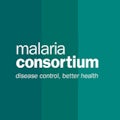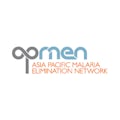Advancing Universal Health Coverage by Eliminating Malaria
Malaria and Universal Health Coverage
Malaria and Universal Health Coverage

As our region progressively drives down malaria, countries must prioritize equitable and affordable access to quality health care services and commodities to achieve the mutually reinforcing goals of malaria elimination and universal health coverage.
On This Page
- Key Principles of Malaria and UHC
- Policy Recommendations on Malaria and UHC
- Additional Resources for Malaria and UHC
The Asia Pacific region has made great strides in expanding universal health coverage (UHC), making healthcare services increasingly available to all. However, gaps remain across countries where there is limited health care infrastructure, limited resources, and where out-of-pocket spending still accounts for half of total health expenditures. The COVID-19 pandemic has exposed the weaknesses of our health systems. Regardless, countries with strong commitments to UHC such as Korea, Sri Lanka, Thailand and Vietnam are better equipped to manage the health impacts of pandemics.
The goals of malaria elimination and improving UHC are inter-linked. Policies to advance UHC can accelerate malaria elimination. For example, including long-lasting insecticide-treated nets and quality-assured diagnostics and treatment in social health insurance schemes, improved disease surveillance infrastructure to detect infectious disease outbreaks, and strengthened supply-chains will all contribute to malaria elimination efforts. On the other hand, malaria programs, their community-based services and networks of health workers are a good entry point to strengthening primary health care systems.
The malaria response offers a good template to improve UHC for all diseases and making health services available to all. As the region approaches elimination, malaria services will need to be further integrated into the general health system.
Key Principles of Malaria and UHC
Equitable Access
Malaria disproportionately affects under-served populations including tribal people and migrant workers– the same populations who would benefit most from UHC. Providing services in the hardest-to-reach places is essential to both eliminating malaria and achieving UHC. Community health workers trained and equipped with the right tools can provide an expanded scope of services beyond malaria in support of UHC.
In Cambodia, Village Malaria Workers played a key role in both tackling malaria and supporting the country’s frontline response to COVID-19 by ensuring timely access to tests and treatments for all individuals presenting with febrile illness.

Quality
UHC’s commitment to quality also means putting an end to falsified medicines that place at-risk communities’ lives at greater risk. In low and middle-income countries in Asia, 13.7% of all essential medicines were found substandard, with the highest prevalence found amongst antimalarial drugs. Fortunately, in Asia Pacific, programs supporting such efforts already exist. The Indo-Pacific Regulatory Strengthening Program, for one, is a regional partnership to fight the prevalence of fake drugs and build robust systems for accessing high-quality medicines. Accelerating UHC will provide an opportunity to revisit regulations and guidelines regarding the quality of services and commodities used across disease areas, including malaria.
Data
Robust surveillance and response systems help support active case management for any infectious disease by providing early warning of potential threats and allow for programme monitoring functions. The ‘1-3-7' surveillance and response strategy for malaria cases, for instance, played a pivotal role in certifying China malaria-free. UHC is an important step to leverage existing surveillance systems running in silos and integrate disease surveillance systems to effectively prevent the spread of disease among the at-risk communities.
Sustainable Financing
About 68 percent of the total expenditure on malaria control and elimination globally is funded by international donors. As more countries prepare to move away from external funding, transition readiness assessments as well as subnational advocacy strategies to general local investments can support the continuity of service. Encouragingly, Cambodia, the Philippines, Sri Lanka, Thailand, and Vietnam have conducted transition readiness assessments and begun to plan for transition. Increased domestic financing will be critical to ensuring the sustainability of malaria and other critical health services, even as countries transition to post-elimination phase. Malaria will need to be integrated into social health insurance . An increased total health expenditure as a percentage of GDP will be required to support social health insurance that advance UHC, integrate malaria services, and in turn reduce the financial burden of malaria on individuals and families.
Policy Recommendations on Malaria and UHC
1. Invest in the Frontline
Malaria elimination and UHC both require steadfast prioritization of at-risk populations so that no one is left behind. Community health workers, as the first line of defense against malaria and other infectious diseases, are critical to achieving UHC at the last mile.
- Expand the community health worker programs to increase access to basic health services among remote and underserved communities.
- Ensure community health workers are adequately trained and equipped with the right tools to provide an enlarged set of services, including malaria.
- Formalize integration and accreditation of community-based providers in national health systems.
2. Ensure Quality
Strengthening regulatory systems to ensure the quality of commodities while expanding access is critical.
- Strengthen regulatory oversight and quality assurance mechanisms throughout the supply chain.
- Ensure active collaboration between national malaria programs and primary health centres to improve access to quality malaria diagnosis, treatment and control interventions.
3. Leverage Data
Ensuring that existing surveillance systems are robust and well-integrated is pivotal to strengthening malaria program planning and response.
- Strengthen existing surveillance systems to ensure good-quality data can be leveraged.
- Integrate all major components of a malaria surveillance system into broader health management information systems, including, where applicable, systems for reporting notifiable diseases.
- Actively monitor disease incidence and mortality through surveillance systems to better target interventions and to inform the quality of existing tools.
4. Step Up Domestic Investment
Including malaria services in social health insurance will generate direct returns for both malaria elimination and UHC goals as domestic resources for malaria are mobilised and financial protection is extended.
- Make malaria a key priority of UHC planning and budgets in endemic countries to augment support received from donors in the fight against the disease.
- In line with investing in frontline workers, review the incentive structures for community health workers, including related line items in national budgets, such as continued education and training.
5. Aim for Convergence
Sustaining strides in malaria elimination will require the integration of vertical programs into broader health systems, especially where there are overlaps. For instance, formalising diagnosis protocols for co-infections with similar clinical symptoms will reduce inefficiencies and improve health outcomes.
- Integrate malaria elimination interventions at the community level into a broader package of care to reduce inefficiencies and improve health outcomes, while leveraging domestic resources.
- Formalize malaria diagnosis protocols for co-infections with similar clinical symptoms to avoid misdiagnosis and expand the role of community health workers to sustain malaria interventions and offer additional essential healthcare services.
Momentum towards UHC is critical to protect all populations against existing and future infectious disease threats. Equity is at the forefront of both UHC and malaria elimination efforts.






